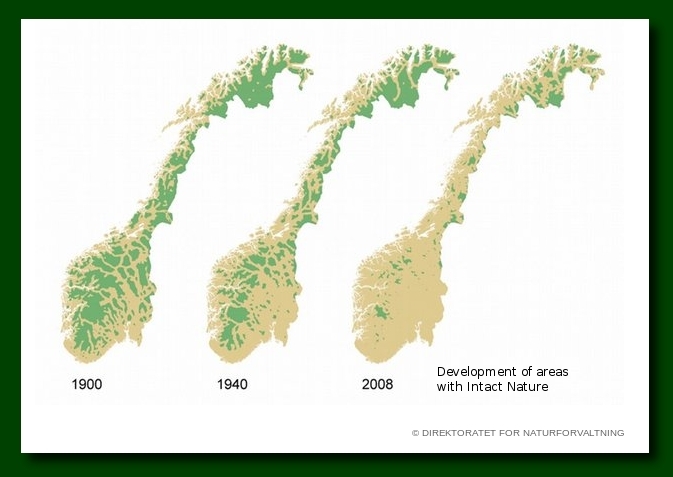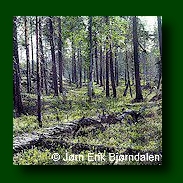
North-Norway is sparsely inhabited compared with rest of Europe. Even if people here through all times have lived in and by nature, this has happened in such way that the habitats have not changed much through time. However, in the most recent time the use has intensified and the tracks after human activity are more visible and more extensive. Fortunately, we still have large areas with intact nature that hardly exist elsewhere. These intact areas are something that the inhabitant's in North-Norway can be proud of. At the same time it also a large responsibility to take care of and manage in a proper way.
The figure shows the occurrence of areas situated more than 5 km from the nearest road, railroad, built-up areas or electricity dam constructions for the years 1900, 1940, and 2008. We can easily see that the largest areas are situated in North-Norway, especially in Finnmark. Many species of animals are dependent on such large undisturbed areas, of which the Lesser White-fronted Goose is one of them. Such undisturbed areas are very valuable for outdoor activities and nature experiences..

Norway's largest remaining primeval forest is situated in the Pasvik Valley in Finnmark. Large parts of this forest is protected - the Øvre Pasvik National Park. In this park there are a number of eastern species of animals and plants that are rare or doesn't occur in the rest of the country.